#kolkheti
Text
Gold Turtle Necklace from Ancient Colchis (modern-day Georgia/South Caucasus) c. 450 BCE: this necklace was crafted from 31 turtle-shaped pendants, each one made of g0ld

The necklace was discovered during excavations at an archaeological site in Vani, Georgia (the country, not the state). Ancient Vani once served as the religious and administrative center for the Kingdom of Colchis; as I've previously discussed, Colchis was also known as the homeland of the fabled Golden Fleece, and to much of the ancient world, the Colchians themselves were renowned for their skills in goldsmithing.
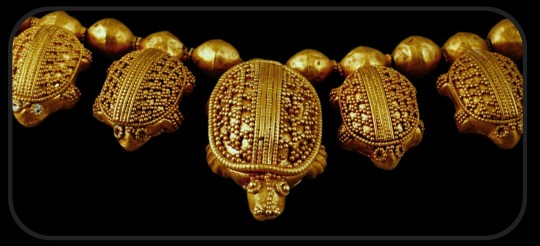
The turtle pendants on this necklace are all decorated with ornate filigree and granulation patterns. The eyes of the 30 smaller turtles were originally made with glass inlay, while the eyes of the largest turtle (seen in the center) were made from drops of gold.
As this article also notes (translated from Georgian):
[This necklace] is unique because of the zoomorphic depiction that it presents. Among the known examples of goldsmithing from antiquity, the depiction of a turtle is not attested anywhere other than the Vani necklace.
The local origin of the necklace is primarily indicated by the stylistic unity of the pendants with other examples of Colchian goldsmithing. It should be noted that the land turtle depicted on the pendants was widespread in Colchis.
The excavations at Vani have uncovered lots of other artifacts made by Colchian goldsmiths. These artifacts include temple ornaments, zoomorphic figures, pieces of jewelry, diadems, headdresses, hairpins, drinking vessels, and appliqués, among other things, and they've provided some really valuable insights into the unique goldsmithing traditions that existed among the peoples of Colchis -- and the myths that evolved as a result.
A few of the other golden artifacts from Vani:
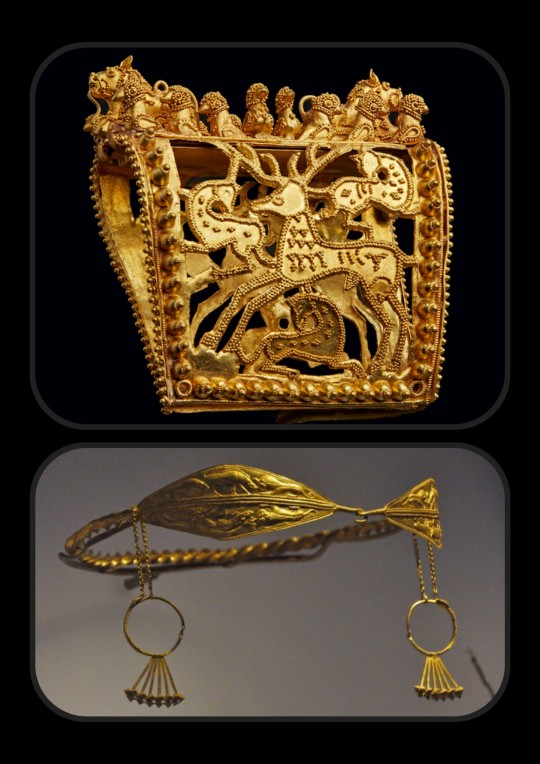
Top: headdress ornament featuring an openwork design, c. 350-300 BCE; the central panel of this piece depicts a stag and three other deer, while the frame is topped by two lions and several rows of birds; Bottom: a diadem with a set of temple ornaments, c. 400-350 BCE; all of the panels along the front of the diadem depict scenes of prey animals being hunted by lions

Top: necklace with a series of ram-shaped pendants, c. 400-350 BCE; each pendant was forged from two separate castings that were sealed together to form a complete shape, and the ears/horns were then soldered onto each piece; Bottom: set of bracelets with boar finials, c. 460-440 BCE

Golden appliqués depicting various animals, c. 400-300 BCE

Set of temple ornaments that depict two pairs of riders on horseback, c. 400-350 BCE
And a map showing the location of modern-day Georgia (just for reference):

As this map illustrates, Georgia is nestled right at the crossroads between Europe and Asia, with the Black Sea located on one side and the Caspian not far from the other; it is bordered by Russia to the North and by Turkey, Armenia, and Azerbaijan to the South
Sources & More Info:
National Geographic (Georgian): Golden Kolkheti
Atinati: The Golden Kingdom of Colchis
Smithsonian: Summary of "Wine, Worship, and Sacrifice: the Golden Graves of Ancient Vani" Exhibition
Burusi (Georgian): The Archaeological Discoveries at Vani
Quaternary International: A Modern Field Investigation of the Mythical “Gold Sands” of Ancient Colchis and the “Golden Fleece” Phenomena
#archaeology#history#artifact#ancient history#georgia#sakartvelo#colchis#kolkheti#vani#gold#turtle#jewelry#golden fleece#goldsmithing#south caucasus#mythology#art#applique
2K notes
·
View notes
Text
0 notes
Text
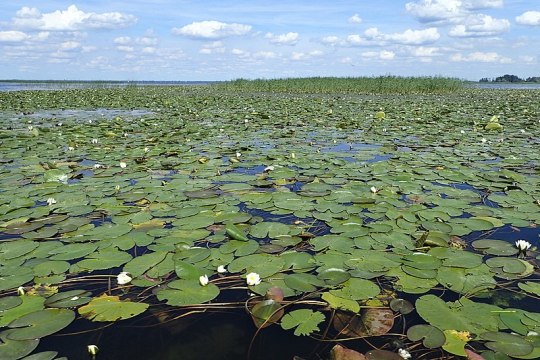


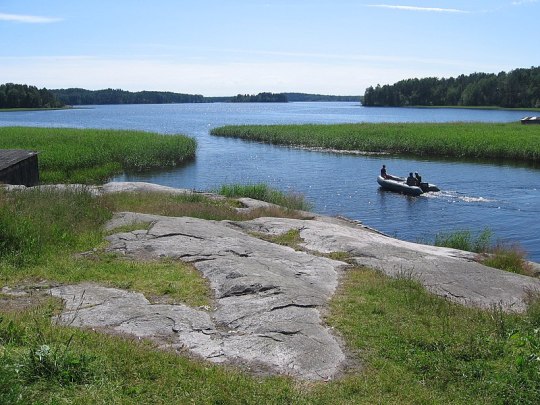

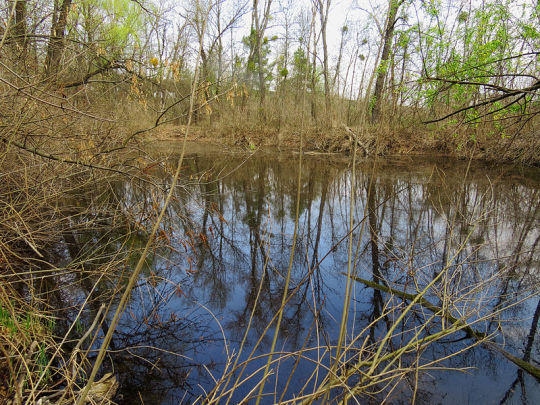
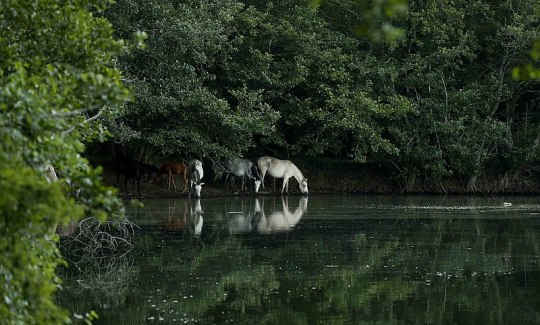


swamp/wetland compilation (swampilation)
in order:
Nymphaea alba kz04.jpg
Nationalpark Müritz - zwischen Schwarzenhof und Specker Horst - Sumpfgebiet am Specker See (21).jpg
MOOR.jpg
Бухта Терву. - panoramio.jpg
09978jfMapangpang Magtanggol Bridge Science City Munoz Ecijafvf 04.JPG
Trukhaniv lake1.JPG
Horses at Kolkheti National Park.jpg
Teichufer Hoisdorf.JPG
Luminata 2019 - 003 (48779179948).jpg
0 notes
Photo

New FC Kolkheti Sport Air Jordan 13 Shoes - BiShop from Tagotee.net 🔥 See more: here
0 notes
Text
♠️♥️BET DECK - 2023-05-05♦️♣️
♠️♥️BET DECK - 2023-05-05♦️♣️
Follow for more!
#autobet #betdeck #bet #football #soccer
♠️♥️BET DECK – FLOP♦️♣️⚽️Siegendorf-Traiskirchen (Austria)➕Under 3.5 goals⚽️Kolkheti Poti-Kolkheti Khobi (Georgia)➕Under 3.5 goals⚽️Arbroath-Hamilton Academical (Scotland)➕Under 2.5 goals💵Total odds 3.34, follow for more!#autobet #betdeck #bet #football #soccer pic.twitter.com/zrU9TzLX8j— Sporel Autobet (@autobet_sporel) May 5, 2023
♠️♥️BET DECK – RIVER♦️♣️⚽Taraz – Ekibastuz : home win⚽Shukura –…

View On WordPress
0 notes
Text
Tourism and Fisheries ‘compelling reasons’ for Blue Economy in Georgia

Image: The Georgia MAF attracted over 50 delegates from throughout Europe. © DOORS Black Sea.
Our first round of Multi-Actor Forum (MAF) workshops were completed on The World Wetlands Day of February 2, 2023, in Batumi, Georgia and identified socioeconomic and policy needs along the Georgian Black Sea coast. National stakeholders selected as clear priorities the following Blue Economy sectors: marine and coastal tourism, capture fisheries, marine aquaculture, shipping/ports, surprisingly voting strongest for marine research & development.
Background to the Blue Economy
Prominent expert in integrated coastal management (ICM) globally, Dr. Jens Sorensen, in his seminal work writes (adapted from Baseline 2000 Background Report: The Status of Integrated Coastal Management as an International Practice (Second Iteration)", page 8-7, Urban Harbors Institute Publications, Paper 31, 2002), that there are at least four compelling reasons for the Governments to seriously take the need for integrated governance approaches such as ICM and sustainable Blue Economy: (1) exceptional socioeconomic significance of marine and/or coastal fisheries, (2) marine and coastal tourism (international, in particular), (3) coastal (e.g. wetlands) and marine environments of international importance, and (4) coastal hazards... In his opinion (personal communication to Mamuka Gvilava) we did not have that time any of these socioeconomic conditions in Georgia and even around the Black Sea!
youtube
Video: Some highlights and interviews with stakeholders. © DOORS Black Sea
But that advice was given 20 or more years ago, recognises Dr. Mamuka Gvilava from partner GeoGraphic and DOORS country leader for Georgia. Since then, tourism and Black Sea marine fisheries, in particular, became essential socioeconomic sectors in Georgia and even regionally in the eastern Black Sea, at least for two coastal nations of Georgia and Turkey, intensively fishing in this part of the Black Sea basin. Kolkheti Protected Areas has long proved to be indeed globally significant and unique wetlands of international importance, designated as Ramsar (1996), Emerald (2019), Important Birding Area and Special Protection Area (IBA-GE04 and SPA-17 Kolkheti) sites, and very recently even added to the UNESCO World Heritage List. As for the coastal hazards, pervasive nuisances with coastal erosion will be significantly exacerbated with imminent climate change induced threats, such as already committed Sea Level Rise and more frequent Coastal Floods. Even tornados, almost never heard of in this region, are becoming increasingly common amid climate crisis.
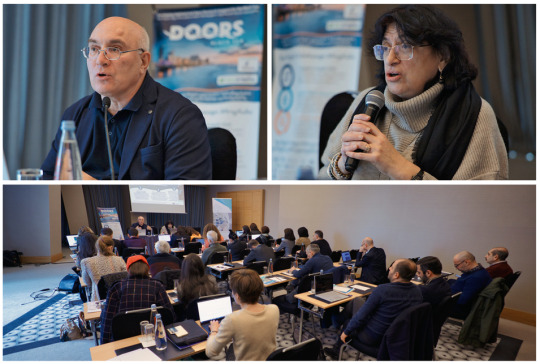
Georgia: determining priorities and needs for Blue Economy
Our MAF workshop represented the first of its kind in Georgia and was conducted in hybrid with over 50 participants in-person and online with an English translation via the Zoom platform. The event was co-facilitated by DOORS country leader for Georgia and by Ms. Nino Chkhobadze, Chairperson of the Greens Movement of Georgia/Friends of the Earth - Georgia and the former minister of environment (1995-2004). Additional support from Mr. Mamuka Berdzenishvili of Tourism Institute and Ms. Salome Kobaidze, the 1st Cohort Black Sea Young Ambassador from Georgia, was much appreciated as well.

The workshop was attended by stakeholders from tourism (kindly represented by Deputy Head of Department of Tourism and Resorts of Ajara A.R., Georgia, Ms. Kristine Dzidziguri), fisheries and aquaculture, maritime education and marine sciences, maritime businesses and NGO sectors, as well as key environmental and enforcement agencies, was held back-to-back with the national consultation for the Black Sea SRIA implementation plan, was officially addressed by Ms. Maia Javakhishvili, Black Sea Commission Member for Georgia, Ministry of Environmental Protection and Agriculture of Georgia. Online participation by the key SRIA stakeholders from the Ministry of Education and Science of Georgia and the Shota Rustaveli National Science Foundation of Georgia was indeed indispensable.
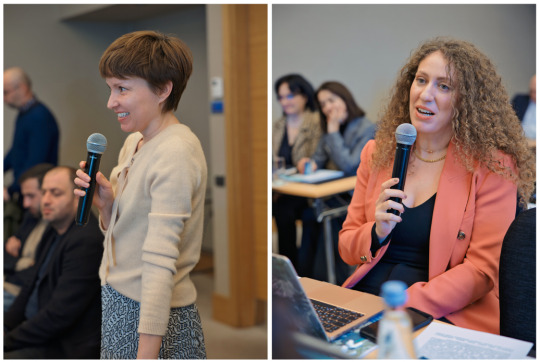
Image: Attendance by several DOORS partners EUROGOOS, ATHENA and MRM (in person) and
GEOECOMAR (online) was very much welcomed as well.
youtube
Video: Lydia Papadaki of Athena RC explains more about our MAFs in this video. © DOORS Black Sea
Georgian stakeholders, when defining national needs for sustaining thriving tourism, capture fisheries, developing sustainably mariculture and other Blue Economy sectors, were unequivocal in favour of protecting marine environment, which should be a priority need to address nutrient loads/eutrophication, pollution of the Sea from oil and other hazardous chemicals and bathing waters from bacteria, viruses, parasites, and especially marine litter nuisance). And last but not least, the slogan of The World Wetlands Day-2023 was found very relevant by some if not all Blue Economy stakeholders from Georgia: It's time for wetland restoration!
All in-person photos of the Georgia MAF in Batumi can be viewed here and an online screenshot is provided below, as well as a map representing forum participants and guests.

0 notes
Photo





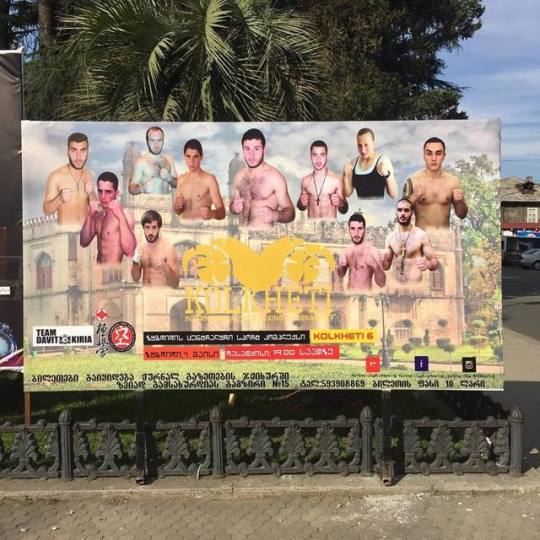
ქართველი მებრძოლები / Georgian warriors Fight Club
#ქართველი მებრძოლები#Georgian warriors#Georgian Fight Club#Fight Club#Kolkheti#Kolkheti KickBoxing#Kickboxing
6 notes
·
View notes
Text
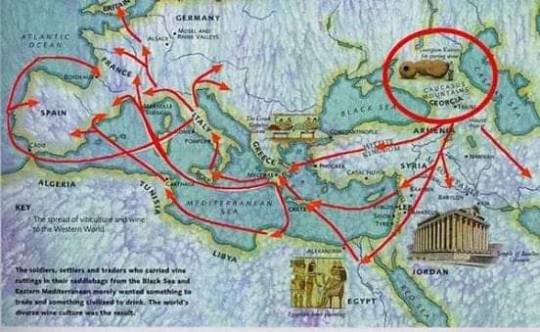
1. Georgia is the ancient homeland of wine Here the cradle of wine was buried here 8,000,000 years ago when wine was introduced to Europe in the 15th century.
2. In Georgia, cook in Colchis, goldsmiths and maize cultures are still in BC It was common in IV-V centuries.
3. In Georgia, in Kolkheti, marble stones were prepared in order to decorate the "Aia Sofia" temple.
4. Georgia is the home of ancient civilization, where it is found that the sun and its women are 1.8 million years old.
5.The flag of Georgia is second only to Denmark in antiquity.
6. Georgian language and alphabet are ancient and are among the 14 languages of the world, which have their own alphabet and origin, as well as Georgian poems and artifacts are one of the oldest.
7. The Second Jerusalem of Christendom, there are such preserved shrines as the Virgin's robe, the robe of the god and the embroidered icon ...
8. In 2001 Georgian polyphony was recognized by UNESCO as a masterpiece of the oral and intangible heritage of mankind; "Chakrulo" was included in the list of UNESCO Intangible World Heritage Sites. In 1977, Chakrulo was launched on two identical gramafiras, programmed on Earth by two identical gramafirms, which were recorded on Earth by the Voyager-1 and Voyager-2 automatic stations. Designed for representatives of the extraterrestrial civilization and is intended to give an impression the earth and mankind.
9. Georgian is spoken in five languages - Georgian, Megrelian, Svan, Abkhazian and Laz ... and in addition there are three ancient alphabets, separate - Asomtavruli, Nuskhuri and Mkhedruli !!!
5 notes
·
View notes
Text
Figurine from Georgia (South Caucasus), c.300-200 BCE: this figurine was found buried in a pit beneath the ruins of an ancient temple; it was decorated with gold jewelry, wrapped in a burial shroud, and then placed in its own special "grave"

This is one of seven figurines that have been unearthed from similar burial pits throughout the city of Vani, which once served as the cultural, religious, and administrative center for the Kingdom of Colchis. Each figurine was crafted from bronze or iron, decorated with pieces of gold jewelry, wrapped in a special shroud, and then buried in a small "grave" that had been dug beneath (or near) one of the many temples that once stood throughout the city.
From The Golden Graves of Ancient Vani:
... other discoveries at Vani have shed light on Colchian culture. Most compelling are seven metal figurines, dating to 300–200 B.C., that have been discovered both in and near sacred structures at Vani. Adorned with gold jewelry and apparently wrapped in decorated garments, the figures were carefully buried in a way that seems to mimic the human burials at the site. Their precise function remains unclear, but they probably related to local religious and funerary customs.
And the Fitzwilliam Museum (which exhibited some of the artifacts from Vani back in 2008) adds:
Distinct local ritual practices are suggested during [the 3rd century BCE] as can bee seen from the four bronze and iron figurines displayed in the exhibition. These were discovered on the city’s upper terrace and were all buried in or near a sanctuary; this placement may well indicate a religious or funerary function for the figurines. The example illustrated here was placed between two terracotta tiles that were buried in a pit cut into the bedrock, thus mimicking contemporary human burials.
The figurine has a head with disproportionately large features, a low sloping brow, and an elongated torso with bowed arms and stiffly rendered legs. Most striking is its lavish gold jewellery, some of which reflects types worn by those buried at Vani. In addition to gold earrings, a torque (neck ring), and bracelets, five gold rosettes appear to have been strung around the figurine’s head and several pendants were found in its chest area.
The form and detail of their jewellery date the four figurines to the 3rd century BC. Their precise function, surely of local religious nature, still remains a subject of discussion. However, it is worth noting that the intriguing practice of burying such figurines in a ritualistic manner appears to be specific to Vani during its phase as a sanctuary city.
During antiquity, the Kingdom of Colchis covered the Western half of what is now the nation of Georgia, located in the South Caucasus. Colchis was famous for its talented goldsmiths, and it ultimately came to be known as the homeland of the fabled Golden Fleece -- the destination of Jason and the Argonauts, according to the Greek Argonautica.
Sources & More Info:
J. Paul Getty Museum: The Golden Graves of Ancient Vani
Fitzwilliam Museum: Ritual
Fitzwilliam Museum: From the Land of the Golden Fleece
Institute for the Study of the Ancient World: Wine, Worship, and Sacrifice
Journal of Greek, Roman, and Byzantine Studies: Vani: An Ancient City of Colchis (PDF download)
#archaeology#history#artifact#ancient history#art#vani#colchis#kolkheti#sakartvelo#georgia#caucasus#ritual artifact#religion#mythology#anthropology#ancient greece#crafting#sculpture#paganism#ancient ruins#ancient temple
43 notes
·
View notes
Photo
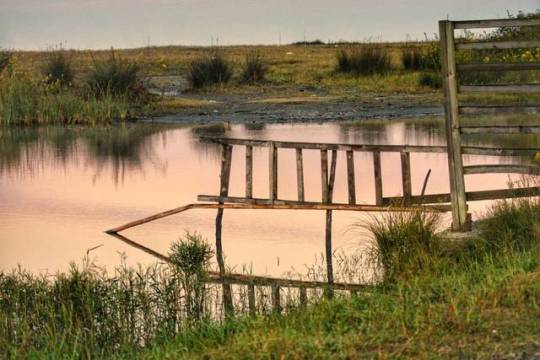
Sunrise in Kolkheti national park. Best place for birdwatching. #kolkhetinationalpark #kolkheti #nationalpark #georgia🇬🇪 #bird #birds #birdwatch #birdwatching #nature #naturelover #landscape ##sunrise #water #watercolor #river #naturelovers
#water#watercolor#naturelovers#naturelover#georgia🇬🇪#birds#sunrise#nature#landscape#nationalpark#birdwatch#river#bird#birdwatching#kolkhetinationalpark#kolkheti
0 notes
Photo
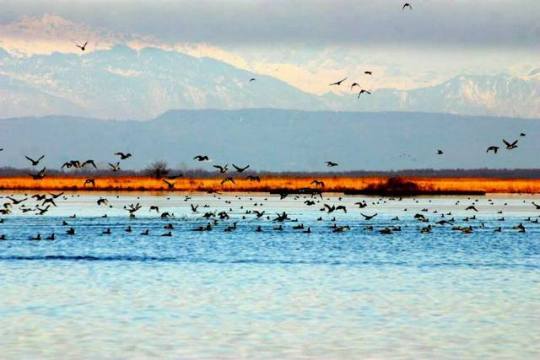
Kolkheti National Park, Georgia
1 note
·
View note
Text
Comparative Evaluation of Conventional and Modern Timber Extraction Systems in Mountain Forests _ Crimson Publishers
Comparative Evaluation of Conventional and Modern Timber Extraction Systems in Mountain Forests by Tamaz Patarkalashvili in Journal of Biotechnology & Bioresearch

Abstract
Exploitation of mountain forests is problematic in all parts of the world because they are particularly vulnerable to uncontrolled exploitation the result of which can be disastrous for environment such as: soil erosion, torrents, mud flows, avalanches, rock-slides. It’s essential that mountain forests exploitation should be based on scientific principles and plans drawn up and agreed beforehand. All cutting and harvesting operations must be planned in such a way to ensure permanent forest cover maintenance, improvement of cutover stands and adequate regeneration process. Today, along with the conventional methods of timber extraction there are new technical facilities available for harvesting depending on the nature of forest and ground conditions. Local foresters must decide which methods and technical facilities must be given priority taking into account forest species and environmental conditions.
Keywords: Harvesting; Terrain; Elevation; Skidding; Environment; Cable way
Introduction
From old terrestrial conventional systems of timber extractions are manual and animal skidding. Manual skidding is rare today in industrial countries. They have limited practice in developing countries for extraction of fuel wood on short distances, usually using downhill gravity of moving logs. As to the animal skidding, in spite of the fact that it is less popular in industrial countries today than it was in the past, in some developing countries they are still used for example, oxen skidding: Costa Rica, Malawi, Tanzania. Elephant skidding: India, Myanmar, Sri Lanka, Thailand [1]. The ground skidding system causes major soil disturbance if not planned properly. Resent technical developments include: the use of ground-based machinery like tractors on rubber-wheels, improvements in planning and designing skid trails to minimize soil disturbance.
To old water conventional system belong log driving downstream using the current of a river. This method was widely used in Europe, North America and other countries [2]. The ideal river considered straight and uniformed one with sharp banks and predictable flow of water. The most desirable species considered coniferous once, especially pine trees, because they floated well. Hardwood species being more dense didn’t float well. Waterways of course are the most acceptable for wood extraction by economical point of view, but they are not always available, nor their use feasible. After development of railroads and trucks for logging roads, log driving using river current became unnecessary. Though this method is still practiced in some remote locations where such infrastructure as railroads and motor transport don’t exist. Log driving in the United States and Canada ended in 1970s and in Scandinavian countries in 1983 [3].
Results and Analysis
Georgia is mountainous country and about 98% of forests grow in mountains. Only 2% of forests grow in plains, mostly in Kolkheti lowlands and flood lands of the rivers: Mtkvari, Alazani, Iori, Khrami and other smaller rivers. About 27% of forests grow under 1000m. of elevation and about 73% above this level. The major part of forests (78%) grow on steep (210- 350) and very steep (360) slopes [4,5]. Such disposition of forests determine their extremely environmental protective functions like: protect from soil erosion, regulation of water flood and its penetration deep into ground. Mountain forests protect highland population from such disasters as avalanches, mud-flows, torrents, rock-slides. They protect highland villages and resorts from strong cold winds. They regulate output of mineral waters of spar resorts and have recreational facility. Due to such environmental importance from the second half of the 20th century local governments began to diminish gradually the amount of annual principal loggings (Table 1), besides in all mountain forests practiced selective loggings. Only in alder forests of Kolkheti lowlands practiced clear loggings.
As we see from table 2.1 annual amount of principle logging decreased from 2,089 ts.m3 in 1960 to 432 ts.m3 in 1990. But after breakup of the Soviet system it began to increase again. From selective logging systems used thinning and group-selective cuttings. Timber extraction performed usually with skidding winches and crawler farm tractors. Only from late 1980s began using wheeled farm tractors that wasn’t suitable for forest operations and caused extremely detrimental effects on environment especially on steep terrain. As to using railroad transport its share was also limited. In Table 2 are presented data of transport ways on territory of forest fund of Georgia. From total amount of forest fund of Georgia forest roads were 2,754km. and roars for common use 5,808 km. The road density on km/km2 in forest fund is given in Table 3. It shows that forest roads density was 0.114 and covered roads 0.014. In European countries on 1km2 forest area forest roads in Germany is 1.9km/km2, in France 0.8-1.6km/km2, in Czechoslovakia 0.6- 2.0km/km2 and in Sweden 1.8km/km2. So, we can conclude that by road density Georgia always legged behind [6].
In the middle of 1980s by Moscow’s initiative have been organized timber extracting trials by helicopters MIL-8 with lifting capacity of 5 ton (about 3.5m3) [6]. Beech forests have been chosen for these trials in Kakheti region of east Georgia. From logging systems practiced in these forests was taken group-selective loggings. This system provides to spot 4-5 places on one hectare for future windows which will be logged like circles. After 5-7 years from first logging the circles are enlarged and so on during 20-25 years depending on forest condition. If the forest density is high (0.8-0.9) and there are enough young generation in the stand the logging period can be shortened. At the end of the period the circles overlap each other and the whole stand is logged down [7,8]. This method guarantee environmental protection and regeneration.
The flying range of helicopter is usually kept within 2km. from landing or dropping zone for helicopter harvesting to be economically viable. Windows for safe helicopter operation must be enlarged much more than 20-25 m. as provided by logging system. At the same time enlarging windows can cause detrimental consequences like soil erosion and so on. So there are many contradictions. The helicopters involved in this type of work consume large quantity of fuel and have to be refueled nearly every hour. So, the refuel pads must be located close to the working area. The landing place has to be sufficiently large to accommodate drop zone. There are much emphasis on safety of all aspects of helicopter-harvesting operation from the felling of trees to the landing or drop zone.
To summarize the trials of using helicopters on timber extraction in beech forests of east part of Georgia we must underline positive and negative aspects of this method.
Among positive aspects are:
A. The helicopter can extract logs from the sites that are inaccessible by difficult terrain as well as from environmentally sensitive areas where the use of ground-based and cable systems are impossible and undesirable;
B. There is no exposed ground surface inside the harvesting area due to the absence of skid trails and cableway corridors ;
C. There is reduced harvesting damage to the surrounding trees ;
D. Fewer roads are required because the economic flying range of helicopter is about 2km.;
E. Reduced damage to forest stands and ground surface along with less soil erosion and stream sedimentation make the intangible benefits that should be considered too ;
F. Among negative aspects are:
G. High capital and operating expanses of helicopter exploitation ;
H. By economic point of view only sound and merchantable timber are selected for logging and extraction leaving in forest less valuable trees, that degrades the remained stands;
I. Helicopter MIL-8 lifting capacity is valid up to 1,000m. above this gradient its capacity diminish gradually. So helicopters with more lifting capacity is needed, like Sikorsky S-64F, whose capacity is 11 ton (7.2m3) ;
J. Helicopter timber extraction cannot be used in selective cuttings as there are not enough timber after each loggings and they are continued for 20-25 years. So they are economically inacceptable. The best way of their use may be clear cuttings when we have enough concentration of logged trees to extract; K. Helicopter timber extraction may be used in limited way in high-value timber forests when they cannot be accessible otherwise.
Discussion
Among modern harvesting equipment are: harvester/ forwarders, cable harvesters, long-distance cable-ways, grappleyarders, swing-yarders. From aerial systems (Helicopters and Balloons [8,9]. New harvesting equipment, being very expansive, mainly used in industrial countries. Skyline crane that was invented in Switzerland, is a form of cable timber extraction system in which harvested logs are transported by suspended steel cable from where the trees are felled to processing location. Skyline crane is installed on an agricultural tractor. A skyline yarder can pull in load limited to 1.5 tons, though occasional loads can be up to 2 tons. Five experienced men can install a skyline cableway in 3-14 days depending on the length of cable and availability of natural supports. The ordinary operating distance is up to 1.5 miles (2.5km). This method of timber extraction is used in industrial countries like: Switzerland, Austria, Czech Republic, France, Italy, west coast of North America and others [10,11].
Skyline system if different from other cable systems. Logs are conveyed with a carriage moving along suspended cables installed either at the landing or opposite end of the cableway. Besides skyline crane many different types of cable systems are in use now. If the system permits to keep the load in fully suspended position during hauling, soil disturbance is minimal, but generally only one end of the tree is in the air, the other end is usually dragging on the ground destroying it. The whole ground territory under the cableway and it is about 10m. width and 1-2km. length is disturbed greatly and it would need recovering works to be done, otherwise substantial erosion is irreversible. After such extraction natural regeneration cannot be guaranteed and tree planting will be necessary that makes this method dearer. In our opinion this method of timber extraction can be used only in clear-cuttings and it’s impossible in selective cuttings. Besides, cableways are mostly used in coniferous forests which characterized by straight stems and narrow branches. In deciduous forests, beech forests for example, their use can cause extra problems with big trees (average 80-100sm wide on 1.3m.) and many strong branches [12,13]. Much hope was for longdistance cable-ways and they worked satisfactorily for decades, but their importance as universal solution of timber extraction declined as they are much more expensive and their loading capacities are limited at the same time they need skilled operating crew.
Under aerial timber extraction methods are united balloon and helicopter extraction [14,15]. Balloons had comparatively few trials in the world. These trials showed their economical and environmental efficiency, but at the same time less loading capacity and immobility. Using balloons in narrow mountain gorges are especially dangerous because during operation they can strike tops of the trees and cause accident. Helicopter timber extraction trials took place in Scandinavian countries, Russia and the United States. These trials proved to be environmentally effective, but no economical conclusions have been made. Using helicopters on timber extraction decrease the need for extra road construction. As the trees are extracted from forest vertically, there is reduced damage to the surrounding trees and ground surface. The postlogging land-slides are less common than after ground extraction. Hely-logging can be used when cable-logging is not allowed for environmental reasons or when roads are lacking. Hely-logging reduces the level of infrastructure required to log in a specific location, reducing at the same time the adverse environmental impact of loggings [15,16].
It must be admitted that roads are the best suited means for all-purpose long-distance transportation on different terrain. Apart from usefulness for forestry they are unquestionable requirement for introduction of larger forces and mechanical equipment to mountain areas bringing in the regular food and maintenance supplies. Moreover, their use is open for all kind of vehicles from village carts to modern trucks. They contribute also to the general welfare in the broadest sense by facilitating agriculture, local trades, cottage industries, medical care, tourism [17].Their construction and maintenance can be carried out by local labor and provide earnings for mountain population. They are important for forest management, supervision, fire protection and procurement of forest products in the vicinity of forest area. In short roads are essential mean to forest yields and utilization to the maximum level of sustainable production and to keep it there permanently [18,19].
From adverse effects of road construction are: environmental disturbance, like threats of increased erosion, disrupt of water submission, other environmental detrimental consequences as mud-flows, torrents, problems of natural regeneration after loggings. Proper road and skid trail planning can reduce considerably the area disturbed by road construction and costs for timber extraction and transportation. Although the new knowhow methods are available their adoption is slow, particularly in the developing countries, due to high costs of their implementation.
Conclusion
Mountain forests are extremely vulnerable to any kind of exploitation as they have essential environmental functions and any uncontrolled operation or improper logging may have irreversible consequences. 73% of forests of Georgia grow above 1000m. of elevation, 78% of them on steep (210-350) and very steep slopes (36= and more). Methods of exploitation and timber extraction must be chosen very carefully. Improper practice of forest exploitation and timber extraction with crawler farm tractors have already destroyed soils and degraded highland forests in last periods and had detrimental consequences on environment like soil erosion, mud-floods, land-slides and stream sedimentation. Logging and timber extraction operations must be planned in such a way to ensure permanent forest cover and adequate regeneration. The comparative analysis of timber extraction systems and facilities showed that forest roads have always been the main sauce of timber extraction and apparently will remain in near future. As trials of using helicopters on timber extraction showed they cannot be used in selective loggings as helicopters need much more free territory for landing and take-off operations than selective method can provide, otherwise the principle of selective method of logging is violated itself. They can be useful only on clear-cutting operations when there are comparatively large concentrations of timber to justify the considerable investments involved.
https://crimsonpublishers.com/jbb/fulltext/JBB.000555.php
For more open access journals in Crimson Publishers
please click on https://crimsonpublishers.com/
For more articles in open access Journal of Biotechnology & Bioresearch
please click on: https://crimsonpublishers.com/jbb/
Follow On Publons: https://publons.com/publisher/6342/crimson-publishers
Follow On LinkedIn: https://www.linkedin.com/company/crimsonpublishers
#Crimson Publishers LLC#crimson publishers#Crimson JBB#Biotechnology & Bioresearch#Biotechnology Open Acess Journal#Biotechnology & Bioresearch open access journal
0 notes
Text
#новости | Коронавирус вывел из строя футбольный клуб "Колхети" из Хоби
#новости | Коронавирус вывел из строя футбольный клуб “Колхети” из Хоби

Грузия онлайн Грузия

Грузия онлайн

https://sputnik-georgia.ru/society/20201118/250080381/Koronavirus-vyvel-iz-stroya-futbolnyy-klub-Kolkheti-iz-Khobi.html
Хобскому “Колхети” придется на какое-то время повесить бутсы на гвоздь – инфицированы пятнадцать футболистов
ТБИЛИСИ, 18 ноя — Грузия онлайн.Коронавирусом заразились 15 игроков футбольного клуба “Колхети” из Хоби (регион…
View On WordPress
#Батуми#вывел#Грузия#из#клуб#Колхети#коронавирус#Новости#новости грузинские сегодня#строя#Тбилиси#Футбольный#Хоби
0 notes
Photo
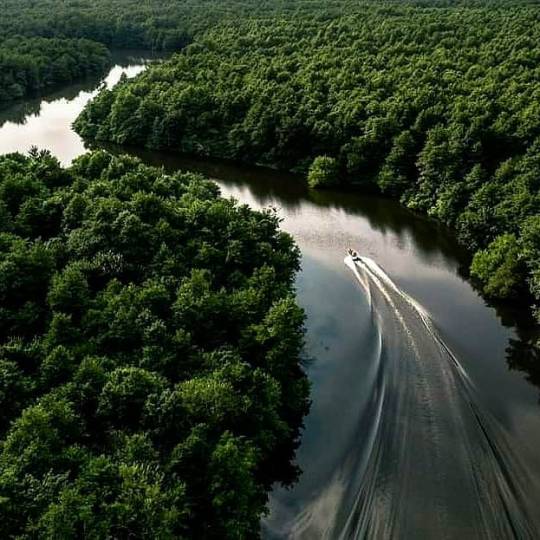
Национальный парк Колхети ⠀ В настоящее время территория национального парка Колхети составляет около 30 тысяч гектаров. Здесь встречаются редкие болотные птицы и растения — например, белая кувшинка (Nymphaea alba), имеретинский дуб (Quercus imeretina), ольха бородатая (Alnus barbata) и дуб Гартвиса (Quercus hartwissiana). Также прибережная зона Колхети входит в миграционный маршрут евразийских и африканских водоплавающих птиц. ⠀ Озеро Палеостоми является важной частью национального парка. На дне озера археологи обнаружили остатки поселения, датируемого II веком. Предположительно на этом мест располагался экономический и культурный центр Колхиды — город Фазис. Античные мифы рассказывают о том, что именно здесь останавливался корабль аргонавтов. Также считается, что именно на этой территории возникло одно из первых государств в Грузии – Колхида, и была отчеканена первая грузинская монета. На реликтовое озеро приезжает много туристов, орнитологов и ихтиологов — в озере обитает около 100 видов рыб, а через эти территории мигрирует почти 200 разновидностей птиц. Заболоченные территории Колхети и озеро Палеостоми являются редкостью для черноморской зоны и позволяют развивать здесь не только такие виды туризма как пешие походы или прогулки ��а лошадях, но и лодочные прогулки, а также дайвинг. Предлагаемых для туристов маршрутов множество, разнообразны и средства передвижения по озеру — от лодок и катеров до экстремальных каяков. В национальном парке хорошо развита туристическая инфраструктура, организованы специальные места для пикников, построены рестораны, предлагающие блюда национальной кухни, и мини-гостиницы. ⠀ . ⠀ . ⠀ #тур #travel #travelgram #travelingram #traveler #travelphotography #travels #travelblog #vacation #instatravel #instatraveling #instatrip #instagramanet #mytravelgram #trip #vacation #грузия #Georgia #tbilisiй #грузинскийтанец #танцы #тбилиси #грузияждет #tbilisi (at Kolkheti National Park) https://www.instagram.com/p/CEO7GRWKseR/?igshid=1a4ejs7g63nmy
#тур#travel#travelgram#travelingram#traveler#travelphotography#travels#travelblog#vacation#instatravel#instatraveling#instatrip#instagramanet#mytravelgram#trip#грузия#georgia#tbilisiй#грузинскийтанец#танцы#тбилиси#грузияждет#tbilisi
0 notes